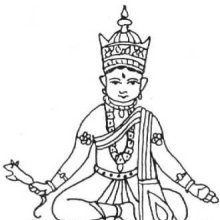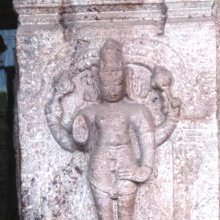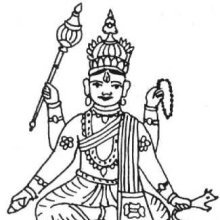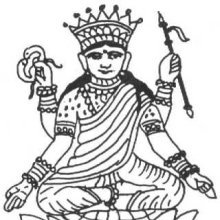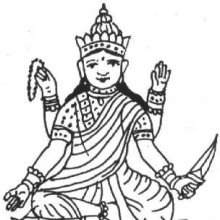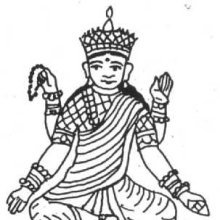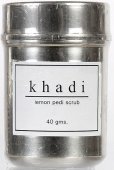Hand: 6 definitions
Introduction:
Hand means something in Hinduism, Sanskrit, biology. If you want to know the exact meaning, history, etymology or English translation of this term then check out the descriptions on this page. Add your comment or reference to a book if you want to contribute to this summary article.
Images (photo gallery)
(+991 more images available)
In Hinduism
Ayurveda (science of life)
Nighantu (Synonyms and Characteristics of Drugs and technical terms)
Source: WorldCat: Rāj nighaṇṭuHand in the Kashmiri language is another name for Dugdhaphenī, a medicinal plant identified with Taraxacum officinale Weber. Ex. Wiggers or “common dandelion” from the Asteraceae or “aster” family of flowering plants, according to verse 5.98-99 of the 13th-century Raj Nighantu or Rājanighaṇṭu. The fifth chapter (parpaṭādi-varga) of this book enumerates sixty varieties of smaller plants (kṣudra-kṣupa). Other than the Kashmiri word Hand, there are more synonyms identified for this plant among which seven are in Sanskrit.
Unclassified Ayurveda definitions
Source: Advances in Zoology and Botany: Indigenous Knowledge of Some Medicinal Plants of Himalaya RegionHand refers to the medicinal plant “Taraxacum officinale Weber et Wigg.” from the Asteraceae family, and is used for ethnomedicine treatment of Fever in Ahmednagar district, India. The parts used are: “Leaves, Roots”. Instructions for using the plant named Hand: Leaves are used as vegetables to treat jaundice.

Āyurveda (आयुर्वेद, ayurveda) is a branch of Indian science dealing with medicine, herbalism, taxology, anatomy, surgery, alchemy and related topics. Traditional practice of Āyurveda in ancient India dates back to at least the first millenium BC. Literature is commonly written in Sanskrit using various poetic metres.
Natyashastra (theatrics and dramaturgy)
Source: Shodhganga: Elements of Art and Architecture in the Trtiyakhanda of the Visnudharmottarapurana (natya)The Hands refers to one of the major Body Parts with which are associated various gestures and expressions (in Sanskrit Dramas), as conveyed through Āṅgikābhinaya: one of the four divisions of Abhinaya or “ways to convey or represent one’s emotion to others”, according to the Nāṭyaśāstra and the Viṣṇudharmottarapurāṇa, an ancient Sanskrit text which (being encyclopedic in nature) deals with a variety of cultural topics such as arts, architecture, music, grammar and astronomy.—The āṅgikābhinaya includes the histrionic representation of the limbs which is simply known as physical gestures. The aṅgas i.e., major classification of the body parts are six in numbers viz., head, hands, chest, sides, waist and feet.

Natyashastra (नाट्यशास्त्र, nāṭyaśāstra) refers to both the ancient Indian tradition (shastra) of performing arts, (natya—theatrics, drama, dance, music), as well as the name of a Sanskrit work dealing with these subjects. It also teaches the rules for composing Dramatic plays (nataka), construction and performance of Theater, and Poetic works (kavya).
Vastushastra (architecture)
Source: Shodhganga: Elements of Art and Architecture in the Trtiyakhanda of the Visnudharmottarapurana (vastu)The Hand (as a unit of measurement) is denoted by the Sanskrit term Hasta.—The Measurement used in the construction of every part of the Temple is done with hasta i.e., hand. The dimension of the construction of the whole process is basically based on the measurement in terms of hasta. Different parts of Hindu temple are discussed here focusing on the discussion found in the Viṣṇudharmottarapurāṇa.

Vastushastra (वास्तुशास्त्र, vāstuśāstra) refers to the ancient Indian science (shastra) of architecture (vastu), dealing with topics such architecture, sculpture, town-building, fort building and various other constructions. Vastu also deals with the philosophy of the architectural relation with the cosmic universe.
Yoga (school of philosophy)
Source: ORA: Amanaska (king of all yogas): A Critical Edition and Annotated Translation by Jason BirchThe Hands are denoted by the Sanskrit term Pāṇi, according to verse 3-52 of the Śivasaṃhitā.—Accordingly, “Through the power of practice, the Yogin obtains Bhūcarī Siddhi, whereby he can move like the animals which are hard to catch when hands are clapped (pāṇi-tāḍana) [syāt pāṇitāḍanāt]”.

Yoga is originally considered a branch of Hindu philosophy (astika), but both ancient and modern Yoga combine the physical, mental and spiritual. Yoga teaches various physical techniques also known as āsanas (postures), used for various purposes (eg., meditation, contemplation, relaxation).
Biology (plants and animals)
Source: Wisdom Library: Local Names of Plants and DrugsHand [ھند] in the Kashmiri language is the name of a plant identified with Taraxacum officinale Weber ex Wigg. from the Asteraceae (Sunflower) family. For the possible medicinal usage of hand, you can check this page for potential sources and references, although be aware that any some or none of the side-effects may not be mentioned here, wether they be harmful or beneficial to health.

This sections includes definitions from the five kingdoms of living things: Animals, Plants, Fungi, Protists and Monera. It will include both the official binomial nomenclature (scientific names usually in Latin) as well as regional spellings and variants.
See also (Relevant definitions)
Starts with (+71): Haandy-ghoptyaejasto, Hamdabamda, Hamdabamdatana, Hamdabamdu, Hamdahakki, Hamdahumda, Hamdakki, Hamdal, Hamdale, Hamdalu, Hamdar, Hamdara, Hamdarahu, Hamdarikku, Hamdaru, Hamdega, Hamdetana, Hamdiballi, Hamdidatu, Hamdiga.
Ends with (+22): Akhand, Avakhand, Bhand, Bhandpratibhand, Bharbhand, Bilai-khand, Bitkil-chand, Chand, Chhand, Chhotachand, Chota-chand, Chotachand, Clear hand, Dhand, Gulchand, Izghand, Jhand, Khand, Kshand, Loose hand.
Full-text (+10021): Anjali, Hasta, Pani, Karatala, Mudra, Gajadanta, Hastatala, Liptahasta, Kara, Acamana, Brahma, Panipada, Kapota, Karihasta, Karkata, Pushpaputa, Kapotahasta, Bhuja, Karakosha, Pancashakha.
Relevant text
Search found 496 books and stories containing Hand; (plurals include: Hands). You can also click to the full overview containing English textual excerpts. Below are direct links for the most relevant articles:
Abhinaya-darpana (English) (by Ananda Coomaraswamy)
Chapter 17 - Hands denoting Devas
Chapter 19 - Hands denoting Avatars of Vishnu
Natyashastra (English) (by Bharata-muni)
Chapter IX - Gestures of Major Limbs (aṅga)
Chapter IV - Description of the Class Dance (tāṇḍava)
Guhyagarbha Tantra (with Commentary) (by Gyurme Dorje)
Text 17.7 (Commentary) < [Chapter 17 (Text And Commentary)]
Text 6.8 (Commentary) < [Chapter 6 (text and commentary)]
Text 8.16 (Commentary) < [Chapter 8 (text and commentary)]
Manusmriti with the Commentary of Medhatithi (by Ganganatha Jha)
Verse 5.134 < [Section XIII - Purification of Substances]
Verse 2.72 < [Section XVII - Rules of Study]
Verse 3.225 < [Section XIV - Method of Feeding]
Vishnudharmottara Purana (Art and Architecture) (by Bhagyashree Sarma)
2.2. Hand Postures (b): Saṃyukta-hasta < [Chapter 3 - Drama and Dance]
2.2. (d): Hand Gestures for Daśāvatāra < [Chapter 3 - Drama and Dance]
8(b): The Image of Various Gods < [Chapter 5 - Painting and Image Making]
The Agni Purana (by N. Gangadharan)
Related products
(+99 more products available)
